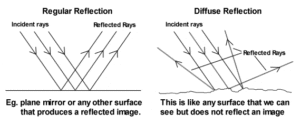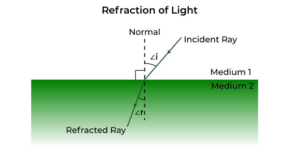SOLENOID ENGINE
Are you a school student? Do you want to construct a solenoid engine in your science project? If, Yes then you are at right place. In this article, we will learn about that what is solenoid engine? What is it’s construction and working principle. We will also learn what is its applications and properties. So without wasting time, let’s get started…
Going further, let’s recall, what is solenoid?
WHAT IS SOLENOID: A SNAPSHOT
A solenoid is a tightly packed helical coil, which is obtained by bounding the copper wire on the cylindrical pipe. It is type of electromagnet which is used to produce a controlled magnetic field by passing the electric current through the coil. See figure below:
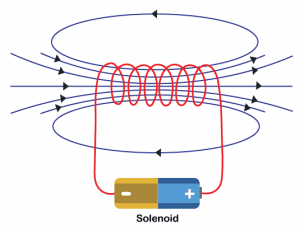
It works on the principle of electromagnetism. When we supply electric current, it produces magnetic field. Though, when solenoid is electrified, it behave like a bar magnet with south and north pole and have both attracting and repelling properties.
WHAT IS SOLENOID ENGINE?
Solenoid engine is a type of linear solenoid. It consists of a coil of wire which is wrapped around a movable metal core called a plunger. When electric current is supplied, the metal rod (plunger) is allowed to freely move back and forth of the cylindrical coil.
It is used to apply the pulling or pushing force to a mechanical device. The motion of the back and forth of the plunger depends on the magnitude of the electric current that supplied.
You have learnt that what is a solenoid engine? Now, let’s see what is it’s construction?
CONSTRUCTION OF SOLENOID ENGINE
Here, we will construct a basic version of solenoid engine. But you can show your creativity by adding various elements to this engine, so it can become more featureable.
MATERIALS REQUIRED
You will need these materials for construction.
- A rectangular wooden plank for bottom plate
- Three small wooden blocks
- Copper wire for coiling
- Cylindrical pipe
- Electrical tape
- Some screws
- Two weighted wheel
- Iron rod (plunger)
- Crankshaft
- Cell or battery
TOOLS REQUIRED
- Drill machine
- Glue gun
- Pliers
CONSTRUCTION PROCEDURE
STEP-1
First of all, lets make our solenoid, for this, lets take a small hollow cylindrical pipe and warp copper wire on it tightly and closely. Insert two cardboard barrier to the both end of the solenoid and stick it with the electrical tape. So that the coiling can’t be loosen and comes out.
STEP-2
So we have made our solenoid, now make our crankshaft. This is the shaft which will rotates with the help of plunger. To make the crankshaft, take a strong copper wire (not easily bendable) and with the help of pliers make two semi-rectangular cuts on the wire, such that one is slightly larger than the other cut. See figure below: you have to bend wire like this.

STEP-3
In this step, let’s make our plunger. This will be inserted into the hollow space of the solenoid. When we supply electricity to the solenoid, due to the electromgnetism, plunger will be pulled inside the hollow space of the solenoid.
To make plunger, take a iron nail equal to the length of the solenoid and then joint a another segment of length (wooden or metal) which will be connected to the crankshaft to rotate it. See figure below:
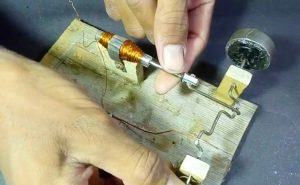
STEP-4
80% of our solenoid is ready. Now let’s fix it to the bottom wooden plank. Take three small wooden blocks, with a glue gun paste it to the wooden plank like a three triangular point.
Two inline wooden blocks for holding the crankshaft and third one is for holding the solenoid. Before sticking the wooden blocks, make sure you have drilled small holes in two of the blocks.
STEP-5
Insert plunger’s one end to the crankshaft’s larger rectangular cut. Now insert the both end of the crankshaft in the holes of wooden blocks and stick it to the wooden plank with the help of glue gun. At the little distance from the crankshaft stick the third wooden block for holding the solenoid.
If the work of sticking the wooden blocks is over then now insert the plunger into the solenoid.
STEP-6
Add the two weighted wheel to the both end of the of the crankshaft. Its added because once the crankshaft starts rotating, these two weighted wheel provide rotational moment of inertia to the wheel. This helps to maintain continuous rotation.
STEP-7
Now, let’s take a small metal strip of the shape of half parabola. Screwed it, near the crankshaft such that it just touches the small rectangular cut of the crankshaft.
Join the other end of this strip to the one terminal of the solenoid. And join the second terminal of of the solenoid to the one terminal of battery or cell and join the other end of battery to the one end of the of crankshaft. See figure below:
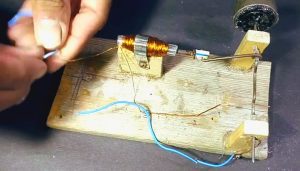
Metal strip touches the small rectangular cut of the crankshaft acted as a circuit key. When smaller rectangular cut comes at upper position it touches the strip and circuit completed but as it goes down circuit breaker.
During rotation a continuous closing and breaking of circuit occurs. When circuit breaks plunger is pulled out from the solenoid but as circuit completed plunger pulled inside the solenoid.
STEP-8
Construction of solenoid engine is complete now, switch on the power supply and see how your solenoid engine works. Let’s rock!
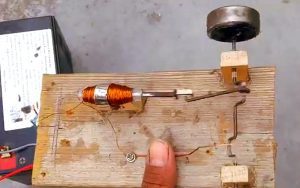
ADVANTAGES OF SOLENOID ENGINE
Some advantages of solenoid engine is listed below:
- Do not produce pollution, it is 100% eco-friendly.
- It can be used as alternative to fossil fuels.
- Less Power consumption but more mechanical work.
- Solenoid engine has quick response time, so it may be the reason for being widely used in electrical engineering.
- Used in automation and secure door locking system.
- It has more efficiency with lesser torque.
Watch this video for better understanding.
Stay tuned with Laws Of Nature for more useful and interesting content.






